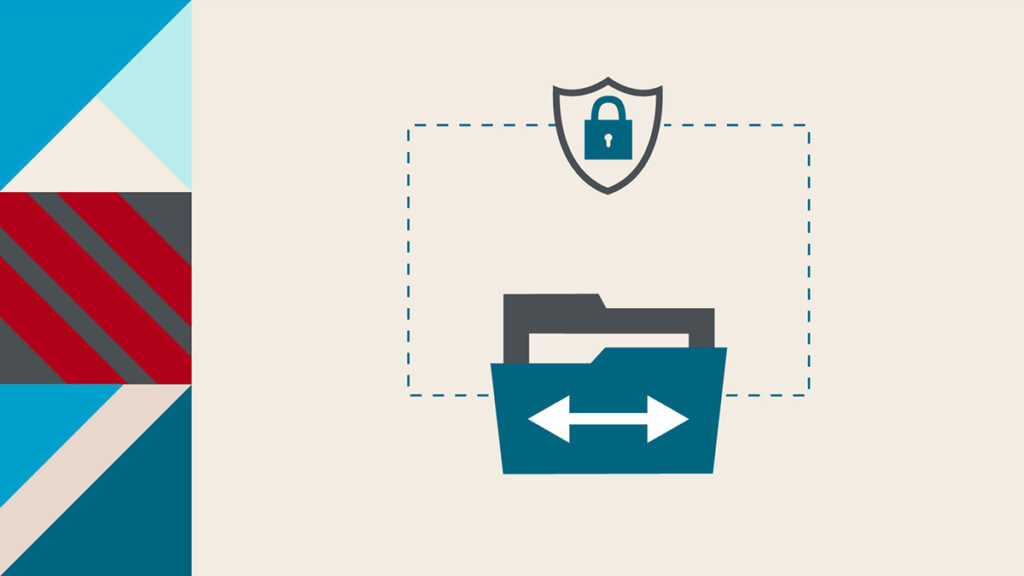Data is the heart and soul of every business interaction, including file transfers. While data integration is critical to feeding this mission-critical exchange infrastructure, its dynamics can be convoluted. A lot of plumbing and wiring needs to happen to support secure file transfer.
The conversation around MFT security is changing as the edge becomes blurrier in managed file transfer (MFT) operations. Practices that were once enough are now outdated, putting the businesses that use them at risk.
Given changing dynamics of the MFT landscape, here are some best practices for mitigating file transfer security risks.
Blurred lines raise the file transfer security stakes
There’s no shortage of reasons businesses are moving managed file transfer to the cloud. There’s the flexibility to meet changing demands, the ability to continue meeting SLAs as file volumes increase, operational cost savings — and the list goes on. However, the rise of the cloud has also blurred the edge of MFT security.
With on-premises infrastructures, the focus was first on perimeter-based security solutions. Network-level protection worked because we didn’t have the cloud yet.
As the cloud entered the picture, and more and more data was exchanged outside the network, we saw the enforcement of measures like single sign-on (SSO) and role-based access control (RBAC).
Modern security teams are no longer comfortable with these measures — and for good reason. Malicious actors are becoming savvier and finding new ways to decrypt, access, and misuse sensitive business data.
With these factors in mind, the conversation around secure file transfer is less about protecting the outside door of your building or asking people to swipe a card to gain access.
Data security in 2024 and beyond is about the resource you’re trying to protect.
Establishing a Zero Trust architecture for secure file transfer
The Zero Trust security model advocates for starting with access where the user needs it. You can then add more access privileges as required.
Think about this in the context of checking into a hotel. The hotel gives you an access card to access your room and shared amenities. It’s also a matter of ensuring that the hotel has visibility into what an individual is doing within the system to thwart issues.
At its core, the hotel aims to offer the best possible experience for YOU – the consumer. In that same spirit, Zero Trust helps balance a seamless user experience – such as avoiding unnecessary blockages so IT and developers can still be productive – while also preventing any unauthorized access.
A Zero Trust architecture is not something that an MFT vendor can just pass down. It is also not a commodity for enterprises to buy off the shelf.
Nuanced understanding is required to apply the framework to model a dynamic, secure, and productive architecture for your needs. This is not binary – it is an iterative model that can help you mature in your journey towards a Zero Trust Architecture.
Here are some guiding pillars to start thinking with this mindset:
- The who: start reducing unfiltered access for users to adhere to least privilege principles.
- The which: use authentication keys every time, enable time-sensitive passwords, and use tokens whenever possible.
- The where: assume that breaches can occur within your network and enforce real-time protection.
- The what: enable dynamic access to applications to support a consistent security posture.
- The why: ensure encryption for all types of data in flight and at rest.
- The foundation: real-time visibility and governance controls facilitate good user experience.
To learn more about how Zero Trust Security is the path forward for secure file transfer, watch this on-demand webinar. Here’s a brief glimpse into what’s covered:
Axway is ready to handle data integration attacks
From a file transfer standpoint, identity is the most critical security checkpoint. Various business users and trading partners consume and produce data.
As an enterprise, you must demonstrate your commitment to keeping your devices secure, which requires visibility at every lifecycle stage.
While there is no single answer for Zero Trust Security in MFT, it’s a matter of assessing the state of your ecosystem: How connected is it? How complete is it?
As your secure file transfer partner, Axway is here to help you realize the value of your ecosystem.
While offering solutions to connect your ecosystem and meet your standards, we pass down our expertise in MFT and Zero Trust Security to our customers. That way, internal teams are armed with the knowledge to further support a secure file transfer infrastructure that’s prepared to handle data integration attacks.
Download this checklist of 3 steps you can take now to future-proof your managed file transfer operations.
